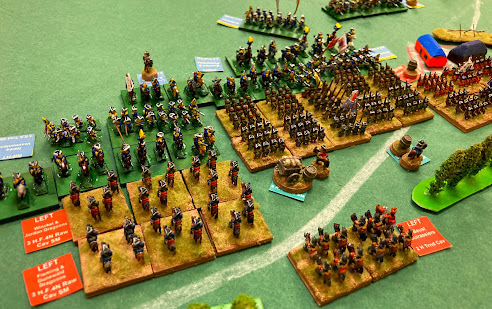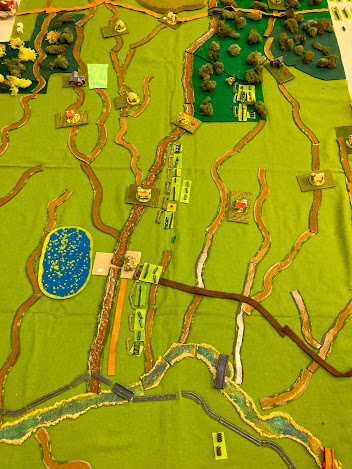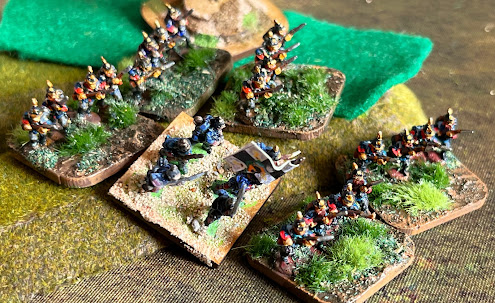A friend of mine writes school textbooks. A few years ago he did one in war and society for the UK history curriculum. I reviewed the chapter on 1750-1914 for him. I thought I was doing him a favour but in fact I caused him a problem. I found two bones of contention in it.
One was the claim that war did not change significantly between 1750 and 1850. Napoleon and Clausewitz might disagree with that.
The other debatable claim was this (I paraphrase): 'the foolish WW1 generals had not learned the lesson of the previous 50 years that, because modern weapons had become so lethal, the defence was king'. I pointed out that (a) the attacker gets to shoot too and (b) the lesson from virtually every war of the previous 50 years was that the attacker wins. The Crimea; Italy in 1859; Denmark in 1864; the ACW; the Austro-Prussian War; the Franco-Prussian War; the Russo-Japanese War and the Balkan Wars, with the latter two being proto-WW1 warfare with WW1 weapons: the attacker wins, the attacker wins, the attacker wins. The difficulty for Paul was that the debatable claim was not his, but he was required to make it because it was actually in the curriculum ...
Which brings us to this week's wargame: Lule Burgas (1912), the fourth in our ongoing campaign from the "Bloody Big Balkan Battles!" scenario book. This was the largest European battle between 1870 and 1914. The attacker won.
The historical situation was that, just four days earlier, the Bulgarians had defeated the Ottomans at Kirkkilise. The battered Ottoman army established a new defensive line at Lule Burgas, but its right flank was open. Ottoman reserves were rushed up to fill the gap and clashed with the Bulgarian 3rd Army, while the Bulgarian 1st Army took Lule Burgas. After a three-day battle, the Ottoman defense caved in and retreated to the fortified lines at Chataldja.
The scenario revolves around four objectives: Lule Burgas itself on the Turkish left; Karagac in the centre; Bunarhisar on the right; and Congara in the rear. Both sides need to hold two of these to draw or three to win. The five annotated photos that follow reveal how the game went.
Looking north up the Turkish lines. Lots of lovely muddy brown rivers, custom-made for me by Rob Owens of Rob's Scenics. A cavalry brigade foot of pic covers the Turkish left. IV Corps is entrenched behind Lule Burgas (the town with the marsh in front of it); I Cps holds the centre; II Cps in the woods. III Cps and XVII & XVIII Provisional Cps are poised to enter top right. Red and white counters mark the four objectives. (Turkish figures are a mix of Irregular Miniatures and Heroics & Ros 6mm.) View of the same Turkish deployment from the Bulgarian side of the table. The scenario uses a large scale - this 6'x4' table represents a 60km front; it lasts 9 turns with two night intervals, each turn being 6 hours; the armies are both over 100,000 men, so each individual base is 2,000-2,500 men and units are brigades of 6,000-10,000 men. Because of the large scale, there is a simple scenario special rule that fire cannot cross more than one river. This worked rather well.

Halfway through the battle, the Turkish left has been turned. Will, commanding Bulgarian 1st Army, chose to send the Sborna Division south of the River Ergene to outflank the Turkish trenches, while the Sofiyska Div threatened the front. Day 1 was spent moving into position and exchanging inconclusive fire with the defenders in Lule Burgas. This photo on Day 2 shows empty trenches as the Turkish units in them and the town have been routed, leaving Abdullah Pasha alone, embarrassed, and hoping John's finger can bring reserves from the centre in time. (Proxies of proxies: the 'Bulgarians' are actually my Greek army for this conflict, which uses British WW1 figures from Irregular. I'll need a different solution for the 2nd Balkan War battles between Bulgarians and Greeks! Entrenchments and railway also by Irregular.)

Meanwhile, the thin line of Nick's Bulgarian 3rd Army clashes with Dave's Turkish reinforcements in the woods. Bulgarian cavalry hold the Bunahisar objective (foreground); Turks hold Congara (top centre) and Karagac (top right). On Day 1, the wide open space in front of Karagac was a scene of carnage as the Bulgarians advanced into a deadly storm of fire, the survivors falling back at dusk and then shifting their effort further left. At that point, Nick was struggling to see how he could possibly avoid defeat.

The game produced a wonderful climax on the last turn. Both sides held two objectives, which would have meant it was a draw. However, in attempting to capture Bunahisar on their right and to hold and then retake Lule Burgas on their left, the Turks had drawn forces away from their centre, exposing Karagac. Two brigades of the Balkanska and Sofiyska divisions were close enough to assault Karagac, which was held by two Turkish brigades. Bulgarian fire had scrubbed away would-be supporting units and Bulgarian QF artillery wiped out one defending brigade. Both attacking units got the full moves they needed to reach, albeit one of them still in march column. Defensive fire held off the Sofiyska, but the Balkanska assaulted from the march - and emerged victorious! It was a splendid end to a game that at one stage had looked nigh impossible for the Bulgarians.
Reflections:
Blenheim in the Balkans. The battle had a nice shape to it: initial fencing along the front, a turning movement on the Turkish left, then essentially a big fight on each flank that made the Turks thin out their centre and make it vulnerable to the victory blow. Kudos to Will for having the vision four turns earlier to get his Balkanska brigade into march column and race it across the battlefield to where it was needed.
Other plans are possible. As is usually the way, I can see other options for both sides. The Turks could deploy differently with more attention to their left flank and to fields of fire. The Bulgarians could try what seemed an obvious approach at first glance: weight their attack heavily to the left, avoiding most of the dug-in Turks and going for the three village objectives rather than the tougher town. Certainly worth replaying to see how it goes with different plans and different players.
Limiting LOS. I noted in the Kirkkilise report how that similarly large-scale scenario might benefit from some line of sight limit. The scenario special rule here did the job.
Quality tells! All the Bulgarians were rated Aggressive. Most of the Turks were Fragile. On Day 1, while they were mowing down advancing Bulgars, the Turks had the best of it. Once the Bulgarians developed their own firing lines and set up their artillery and started dishing some out, Turkish units evaporated rapidly. And, of course, the quality difference swung it in the final assault.
Nice terrain. Rob Owens's rivers had their second serious outing (their first having been at Kirkkilise). Definitely an improvement on the usual blue felt. Now to attend to the roads, and then the woods ...
What a good game! I embarked on this one with some trepidation. Assaulting against an entrenched enemy with equal numbers of troops and modern weapons? It didn't look too promising. But the space for manoeuvre on both flanks actually enabled a mobile game, and it was a bold dash in the centre that decided it at the end. The shift in fortunes and the epic climax meant the game really told a story.
Thank you to Nick, Will, Dave and John for being engaged and enthusiastic and tackling the challenge in good spirits, and to Konstantinos for a fine scenario.






























